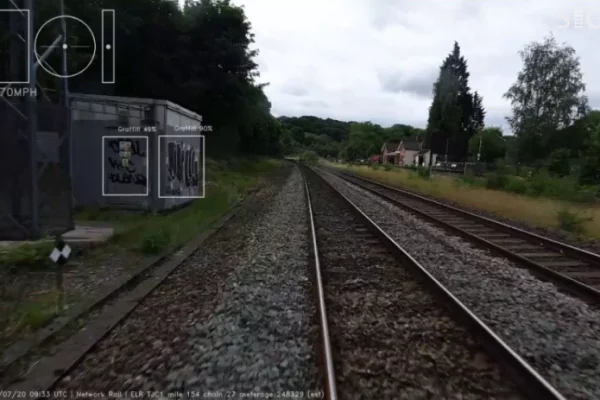
As we know, the rail industry is a safety critical environment. Many who work on, and around, the railway put themselves at risk every day; whether onboard, trackside or onsite, in depot or station environments, safety is paramount and must be maintained and improved wherever possible.
The industry works collectively and continuously to maintain and improve safety procedures and behaviours at every level. This has been particularly evident during COVID as organisations and the public rapidly adapted to changing restrictions. The RSSB Annual Health and Safety Report 2019/20 reports that rail remains one of the safest forms of transport.
When we first entered the rail industry and started to develop what would become AIVR (Automated Intelligent Video Review), we looked at the challenges facing the industry and considered how our knowledge of technology could be of benefit. We obviously had no idea then how critical remote capturing of data would become during the pandemic.
AIVR was built and developed to enable users to view the rail infrastructure and environment in real-time, decreasing the risks to the trackside workforce. The live video data capture shows viewers what trains can see and transmits the images to an online dashboard where we also apply Machine Learning to derive even further insight into the line-side environment.
Maintainers and planners can use the video to find anomalies and issues in the surrounding area of the track. The video enables the ability to constantly review the area, ensuring its safety and identifying signs of trespassing. This was a key area of focus during the pandemic after Network Rail reported that there were more than 5,000 trespass incidents recorded between June and September 2020, with September 2020 recorded as the worst September in five years, seeing a 17% increase from the same time last year.
When problems do arise, teams can be sent to specific locations with a robust brief, up to date imagery, and can plan for changes which would need to take place. This reduces the requirement for people to physically go to site for initial surveys and improves the accuracy of planned works.
When COVID struck earlier this year, it had a profound effect on the rail industry. Aside from the changes in passenger numbers, there were a number of immediate restrictions enforced onboard trains, at stations, in operations centres, and offices. Abiding by these protective measures across all sites could have affected the safety of the teams working on the railway. There was:
- An influx of those needing to work from home or from remote locations but still gain access to rich data.
- Distancing measures that meant team members must stay two metres apart from others at all times. Ride along trips in train cabs to monitor the line-side environment were no longer possible and travelling to and from work sites as teams became troublesome.
While there has been focus on the new precautions needed to maintain and continue to provide train services across the country, it has also been important to maintain the highest possible safety standards.
Innovation has been at the forefront of many of the changes taking place this year. Fresh thinking combined with a necessity to continue to operate has been integral to the survival of many businesses and industries. This is where AIVR has helped.
As a discrete piece of technology, the AIVR unit can sit in two positions, the first is in the cab of the train, meaning drivers can continue to perform their roles without the distraction of a ride along, and in a COVID-secure environment. More recently we have also been able to work alongside SIG to create external housing for AIVR, allowing it to be attached to the outside of the train, mitigating the need to enter the train cab.
The trackside environment can be monitored remotely from a near real-time feed with any anomalies identified quickly by review, or by the rapidly developing Machine Learning models that we build collaboratively with the industry.
Maintenance teams and security reinforcements can be sent to specific sites with the right information and tools, which is a benefit in normal times, but even more important when team members need to travel in separate vehicles and deal with all the implications of COVID regulations
The changes in precautions and practices due to COVID will have a long-term effect on the industry and the developments that are taking place have the potential to be of ongoing benefit.